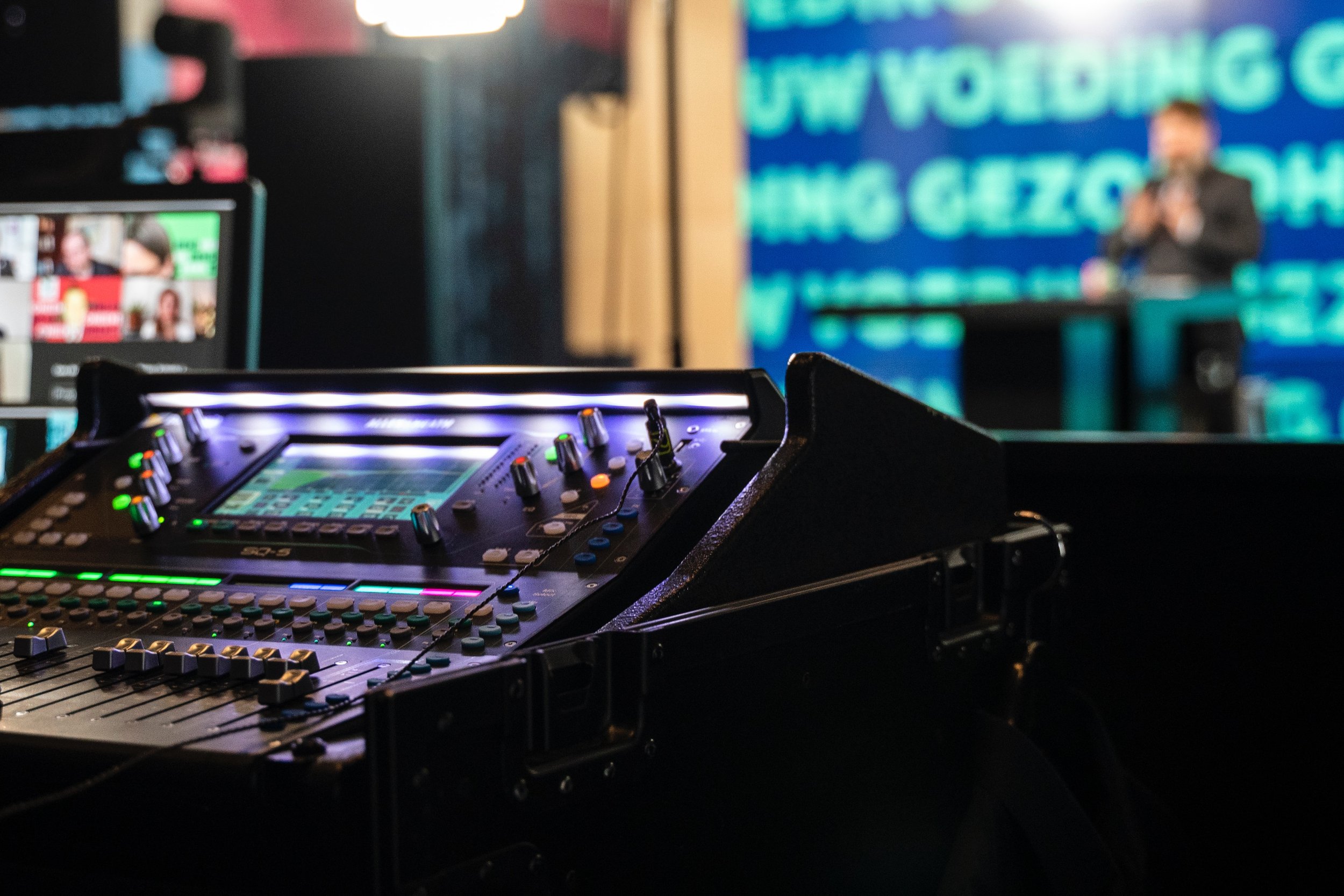How audio visual charlotte nc transforms venue lighting for maximum impact
Wiki Article
Recognizing the Addition of Audio Visual Innovation in Today's Educational Environments
The assimilation of audio-visual innovation in educational setups has changed the mentor and learning procedure. Educators currently have accessibility to devices that deal with numerous learning designs, improving pupil interaction and collaboration. The consolidation of these innovations provides both possibilities and challenges. Understanding just how to efficiently carry out these devices is necessary. What approaches can instructors utilize to take full advantage of the benefits of audio-visual technology in their class?The Development of Audio-Visual Innovation in Education
As educational demands developed over the years, audio-visual technology went through significant makeovers that improved the learning atmosphere. Originally, devices such as movie projectors and slide shows were the key means of incorporating visual components right into class. These very early innovations supplied teachers with the ability to present information dynamically, yet they were restricted in accessibility and interactivity.With the arrival of video cassette recorders in the 1970s, classrooms began to include documented lessons, broadening the scope of instructional resources. The introduction of personal computers in the 1980s further transformed this landscape, permitting the production of multimedia discussions and interactive knowing experiences.
The increase of the web in the 1990s marked a critical minute, making it possible for real-time accessibility to a wide range of audio-visual materials. Today, digital tools such as interactive whiteboards and on the internet understanding platforms continue to boost the educational experience, cultivating engagement and cooperation amongst students.
Benefits of Audio-Visual Devices for Diverse Learning Styles
Audio-visual tools play a vital role in dealing with diverse understanding designs by improving visual learning and enhancing auditory engagement. By incorporating photos, videos, and sound, these modern technologies develop an even more comprehensive educational setting. This multifaceted technique allows instructors to attend to the diverse preferences and requirements of trainees effectively.Enhancing Visual Knowing
Interaction in the understanding procedure is considerably improved via using audio-visual devices, accommodating various discovering designs. These devices, such as video clips, infographics, and interactive discussions, offer aesthetic stimulations that aid comprehension and retention. Visual students, specifically, gain from the consolidation of photos and animations, which can streamline complex principles and boost understanding. In addition, audio-visual resources can highlight real-world applications, making learning a lot more pertinent and appealing. By incorporating color, activity, and noise, teachers can produce a vibrant knowing setting that captures pupils' interest and promotes deeper cognitive connections. Ultimately, the strategic use audio-visual technology not just sustains visual learning however also improves the general educational experience for diverse students.Improving Auditory Interaction
A significant benefit of including audio-visual devices in education is their ability to boost auditory interaction among students. These devices, which encompass multimedia presentations, podcasts, and interactive audio elements, accommodate different finding out styles, specifically benefiting auditory learners (audio visual charlotte nc). By integrating sound and narration, teachers can create immersive experiences that catch students' attention and strengthen understanding. This involvement is essential, as it cultivates a deeper understanding of the product and advertises retention. Furthermore, audio-visual devices can facilitate collaborative learning settings, motivating pupils to participate in conversations and share their insights. Ultimately, the consolidation of audio-visual innovation not only supports acoustic engagement however likewise improves the total academic experience, making learning a lot more dynamic and effective for all studentsEnhancing Involvement Through Interactive Knowing

Gamification components, such as tests and simulations, can enhance motivation and retention, making learning more delightful and effective. These approaches not only stimulate cognitive involvement yet likewise satisfy diverse learning styles, guaranteeing that all trainees can take part meaningfully. As a result, interactive understanding environments promote a feeling of area and belonging, ultimately causing enhanced academic end results. With the assimilation of audio aesthetic technology, educators can change standard classrooms into vibrant spaces where students grow and actively shape their educational journeys.
Connecting Concept and Experiment Multimedia Resources
Multimedia sources act as a critical link in between theoretical ideas and sensible application in academic setups. By enhancing involvement, helping with collaborative understanding experiences, and sustaining varied understanding designs, these devices develop a much more comprehensive and dynamic discovering setting - audio visual charlotte nc. This approach not only cultivates deeper understanding yet also prepares students for real-world difficulties
Enhancing Engagement Via Multimedia
Engagement in instructional settings substantially boosts when trainers integrate multimedia resources into their mentor methods. Making use of video clips, podcasts, and interactive presentations boosts the discovering experience, permitting trainees to connect with the product on numerous degrees. Multimedia sources satisfy numerous finding out designs, giving aesthetic, acoustic, and kinesthetic stimulations that can hold pupils' attention much more successfully than typical lecture approaches. In addition, these sources can streamline intricate ideas, making them more available and unforgettable. By incorporating multimedia, educators can produce a dynamic class setting that fosters inquisitiveness and inspires learners. Inevitably, the tactical use audio-visual innovation visit this web-site serves to connect the void in between academic expertise and functional application, improving the instructional experience for both teachers and trainees.Facilitating Collaborative Discovering Experiences
Various studies show that collective knowing experiences considerably improve trainee results when integrated with multimedia resources. Multimedia devices facilitate communication amongst pupils, enabling them to take part in problem-solving and essential assuming collectively. By utilizing video clip conferencing, collaborative systems, and interactive presentations, instructors produce environments for synergy and shared learning. These innovations make it possible for trainees to connect their concepts effectively and obtain instant responses, promoting a deeper understanding of the topic. Additionally, multimedia resources can offer complex concepts in more absorbable formats, advertising discussion and collaboration. Therefore, the combination of collaborative knowing and audio-visual modern technology not just enhances the educational experience but additionally prepares trainees for real-world teamwork characteristics, emphasizing the significance of collaboration and collective expertise building and construction.Sustaining Diverse Learning Styles
While traditional teaching methods commonly accommodate a minimal variety of discovering preferences, the combination of audio-visual innovation supplies a more comprehensive strategy to education and learning. By utilizing multimedia sources such as videos, interactive simulations, and digital discussions, instructors can address various finding out styles, including aesthetic, auditory, and kinesthetic. This adaptability permits differentiated direction, allowing students to involve with material in manner ins which resonate with their private preferences. Furthermore, audio-visual tools can assist in much deeper understanding by offering multiple representations of intricate concepts. Consequently, students who may battle with standard methods can locate different pathways to success, fostering an extra equitable learning setting that sustains scholastic accomplishment for all learners.Difficulties in Applying Audio-Visual Innovation
Although audio-visual innovation holds excellent pledge for improving academic experiences, its implementation typically experiences substantial challenges. One primary worry is the monetary burden connected with purchasing and maintaining such devices, which can strain budgets, especially in underfunded establishments. In addition, poor training for teachers can impede reliable integration, leaving them ill-prepared to use the innovation totally. Technical problems, such as software program malfunctions and compatibility problems, might additionally interrupt lessons and discourage both teachers and pupils. Furthermore, differing degrees of pupil accessibility to modern technology outside the class can create disparities in learning opportunities. Ultimately, the potential for over-reliance on modern technology might diminish vital teaching techniques, eventually limiting the academic experience. Dealing with these obstacles requires a complete approach, including sufficient funding, expert growth, and fair accessibility to resources, to ensure that audio-visual innovation can be leveraged successfully in today's instructional setups.Ideal Practices for Integrating Modern Technology in the Class

Additionally, promoting an interactive atmosphere through collective tools urges student interaction and useful reference engagement. Utilizing varied audio-visual resources satisfies numerous finding out designs, suiting visual, auditory, and kinesthetic learners. Consistently assessing the influence of innovation on student learning assists instructors improve their approaches and adapt to altering needs. Involving trainees in the selection of innovation advertises ownership and inspiration. By sticking to these ideal techniques, instructors can create a dynamic class atmosphere that successfully integrates innovation and enhances the instructional experience for all students.
The Future of Audio-Visual Innovation in Education
As class progressively welcome innovation, the landscape of audio-visual devices in education and learning remains to progress (audio visual charlotte nc). Future improvements are expected to concentrate on greater interactivity and personalization, allowing teachers to customize discovering experiences to private student requirements. Developments such as increased reality (AR) and online truth (VIRTUAL REALITY) will likely offer immersive knowing atmospheres, boosting trainee involvement and understanding
Furthermore, artificial intelligence (AI) is positioned to play a considerable role in audio-visual innovation by using real-time feedback and adaptive learning paths. This combination might assist educators determine and address trainee obstacles better. Cloud-based systems will certainly help with easier accessibility to resources and collaboration amongst pupils and educators, no matter place.
In addition to these technical breakthroughs, specialist growth for instructors will certainly be essential, guaranteeing they are equipped to use these devices efficiently. In general, the future of audio-visual technology in education assures to develop more dynamic, comprehensive, and impactful learning experiences.
Often Asked Concerns
Just How Can Teachers Pick the Right Audio-Visual Equipment for Their Class?
Picking suitable audio-visual tools you could try this out needs instructors to evaluate their academic objectives, consider trainee demands, evaluate available innovation, and look for referrals from peers or experts, making certain tools effectively improve knowing and interaction within their certain class environment.What Spending plan Considerations Are There for Executing Audio-Visual Modern Technology?
Spending plan considerations for carrying out audio-visual modern technology include first acquisition expenses, maintenance expenses, training for team, and potential software licensing fees. Furthermore, lasting investment in updates and substitutes need to also be factored into economic planning.Are There Specific Training Resources for Educators on Audio-Visual Equipment?
Numerous establishments provide training resources for educators on audio-visual tools, consisting of on the internet courses, workshops, and instructional overviews. These sources aim to enhance educators' skills and self-confidence in successfully integrating technology into their training techniques.Exactly how Do We Gauge the Performance of Audio-Visual Innovation in Learning?
Gauging the efficiency of audio-visual innovation in finding out entails evaluating trainee engagement, understanding, retention prices, and total scholastic efficiency. Studies, assessments, and empirical research studies can provide valuable understandings into its influence on academic results.What Are Typical Misunderstandings Regarding Audio-Visual Innovation in Education?
Usual misconceptions regarding audio-visual technology in education and learning include the idea that it guarantees engagement and discovering outcomes, in addition to the assumption that all students benefit just as, ignoring private knowing preferences and requirements.Report this wiki page